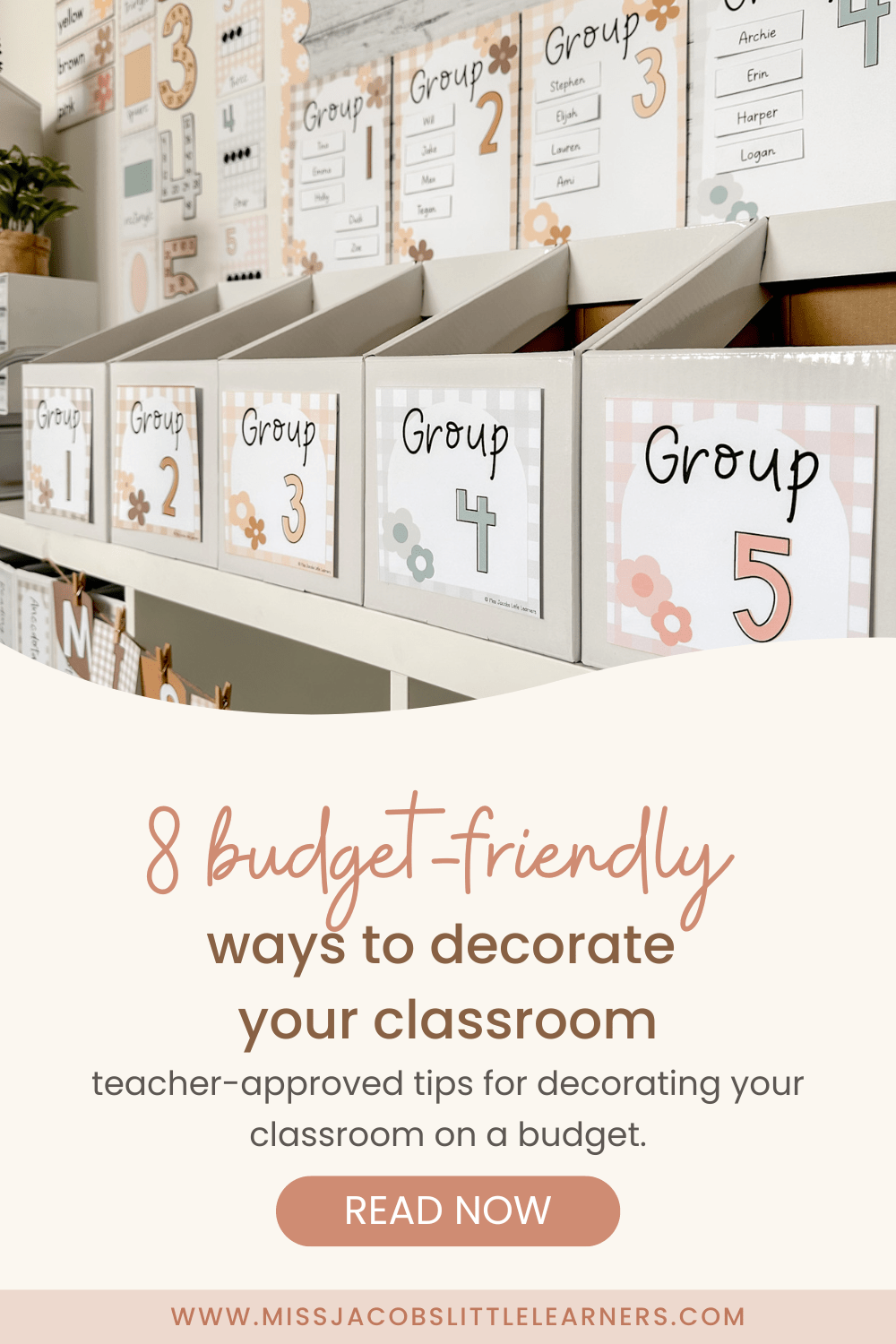
8 budget-friendly ways to decorate your classroom.
As educators, we’ve all been there, dipping into our own pockets to pick up those added extras for our classrooms. Creating a visually stimulating learning environment isn’t always easy when...
As I sat down to write this blog post, I'll admit - I became a little overwhelmed!
Countless articles, books and even theses have been written about how to create a welcoming classroom environment. And as teachers, we spend a significant portion of our careers grappling with that very challenge. I had a moment of wondering, 'What can I possibly add to the conversation?'
But then I realised - with a cup of tea in hand and that familiar passion rising in my chest - that creating a welcoming classroom is exactly what I'm all about!
 No prizes for guessing what word I’m creating here ;)
No prizes for guessing what word I’m creating here ;)I started Miss Jacobs Little Learners for that very reason; to help my teaching BFFs (you!) create a beautiful space where every student feels safe, happy and celebrated.
And all of us, with our differing backgrounds, can bring something fresh to this conversation. We can share what we've tried and share resources that inspire us.
So that's what I'm doing today. (Take that impostor syndrome!)
I'm going to share a resource roundup - a recap of the resources I’ve created, and how you can use them to create a welcoming classroom.
And, because we're teachers and we love a framework, I'll frame it all up with the four questions I use to guide my thinking.
We've all seen it right? When we give kids the opportunity to learn in the way that works for them, they feel infinitely more comfortable.
Now I'm not going to get all pedagogical on you BFFs, because the question of how students learn is huge!
But what I do want to do is share some really simple resources that can help kids feel supported to learn their way.
Visual Timetable: Displaying a visual timetable on a bulletin board makes visible the routines and expectations of the day and week to come. They are great for students who feel comfiest knowing what's coming up and for those who struggle to stay on task.
Hand signals: Wonderful for kids who don't always feel comfortable speaking up, for those prone to distraction and for those sensitive to noise.
Voice Level Display: Similarly excellent for classroom management, and for helping kids recognise and monitor their voice levels.
Classroom layout: A great series of ideas to arrange your classroom with neurodiversity in mind.
Learning Areas: Helpful ideas to promote consistency, predictability, order and safety.
Word Walls and Word Cards: Create visible access to language learning, helping to build confidence and independence.
Don't ever doubt it - these types of visual displays and tactics can be so powerful. They show our kids that we care, that we understand their needs, and that help is never far away.
So, we've got displays and tools in place to support different learning styles.
But what's next? What else can help students in the classroom feel comfortable?
For me, the next thing I consider is how I'm supporting authentic communication and relationship-building in my classroom. Nothing will create a welcoming classroom environment like strong relationships that are rooted in trust and safety.
Now, I know that no classroom display or decor item will be effective without you. You’re the person who brings the lessons, insights and activities to life. And every interaction you have with your students offers a chance to role model what authentic, respectful communication looks like.
When you respond to a situation with patience, kindness and open-mindedness you’re teaching kids that they’re safe. (But don’t get me wrong, I know how hard this is! Especially at 3.10pm on a 40 degree day!)
So - in a nutshell - I’m not suggesting that these resources alone can make the magic happen. But in the right hands, (yours!) I’m sure they can be really effective.
Here are some resources that can really help foster authentic communication:
A Growth Mindset Display supports students to foster their own resilience, reframing and aids the development of self-esteem.
An Affirmation Station can provide the stimulus to promote positive thinking, kindness and bonding moments.
Narrative Writing Units are an effective way of inviting students to share their own stories and experiences while broadening their world views.
Articulating classroom values, rules and expectations with a Classroom Rules Display creates an environment of healthy boundaries and safety.
Using Bunting Letters to create a space for ‘circle time’ is so powerful. It helps with relationship building and fostering a culture of inclusivity. Regularly prioritising conversations about social and emotional wellbeing is especially important because of the disrupted in-person learning we’ve all experienced.
 I will never tire of seeing your gorgeous affirmation and growth mindset displays! Talk about welcoming environments! (Images via @missmcguirt and @justslpthings)
I will never tire of seeing your gorgeous affirmation and growth mindset displays! Talk about welcoming environments! (Images via @missmcguirt and @justslpthings)
Speaking of communication, I saw an Instagram post recently from Julie Carter, a US-based lawyer specialising in education and disability, that I really want to share with you.
 I loved how @juliecarterlaw has challenged outdated expectations around listening.
I loved how @juliecarterlaw has challenged outdated expectations around listening.
It reminded me of that great anecdote Sir Ken Robinson shared about a student who was almost sent to a specialist setting before her psychologist realised she simply needed to move to learn.
The student - Gillian Lynne - later became a famous dancer, choreographed Cats, and won a truckload of awards.
Julie’s post and Gillian’s story remind me just how powerful it can be when we really see our students. When we understand their unique learning style, their unique communication needs and when we meet them where they are- now that’s magic.
BFFs, is there a better feeling on this earth, than seeing a student reach their goal? (I mean, holidays at the end of the school year feel pretty good too!).
But seriously - seeing our student’s success and development is the thing that keeps so many teachers going, year after year. It's the fuel to our fire.
And, we know that reaching personal goals is one of the surest ways for children to feel confident, comfortable and happy. (Maslows’ hierarchy comes to mind!)
So, how can we help them reach their goals and (as Rhi-Rhi says) shine bright like a diamond?
Here are a few little ideas:
Assigning Classroom Jobs allows children to feel a sense of ownership, accomplishment and achievement when they successfully complete their tasks.
Door displays, classroom labels and name tags create a sense of ‘place.’ They help students feel a sense of belonging, and find their own space in the classroom and school where they’re noticed, named and affirmed.
Similarly, Birthday displays can reinforce that sense of being a special part of a team.
The scaffolding of the Reading Group Organisers enable children to know their personal learning goal, and what student success looks like. They can be an important part of student agency.
Now, I know I said this post was a ‘resource roundup’ of the MJLL resources that can make a difference to classroom belonging.
But for this last question, I want to approach it a little differently, and instead provide some questions and provocations. It’s a topic I’m really passionate about, and I know so many of you are too.
One of the simplest and most powerful ways to make kids feel welcome is by celebrating their uniqueness.
I'm sure you'll agree that our diversity makes us unique, special, and oh-so-interesting.
Whether it's culture, ethnicity, gender expression, ability, neurodiversity or familial makeup, there are so many factors that shape who we are.
And for kids to know they belong, they must see their diversity reflected in the classroom. And I’m not just talking about visual displays, but the stories we read, the conversations we have and the things we celebrate.
There are so many simple actions you can take here:
Check your bookshelves: Are they filled with books that celebrate diversity? Here are 25 great options to get you started.
Check your communication: Do you use gender-neutral language? Do your communications with parents accommodate English language learners? Do you have books in languages other than English?
Check your art supplies: Can your students easily depict varied skin tones in their art?
Check your resources: Do your teaching resources (worksheets, displays, graphics etc) include varied races, religions, languages, cultures, sizes, gender expressions and abilities? Is your teaching trauma-informed?
And finally, check your privilege: Have you done the work to understand your own biases, privileges and opportunities for growth?
One of the most powerful things we can do is listen to the lived experience of people from all walks of life. (And that includes our kiddos!).
If we want our students to be inclusive, it needs to start within our teaching teams.
There are some brilliant professionals who work with teams around inclusion and diversity. To name two- Carly Findlay offers disability awareness training, and Tasneem Chopra OAM who offers Diversity, Equity and Inclusion Training.
So BFFs - it starts with us.
Have a chat with your colleagues and principals about inclusion at your school. I promise you, it'll make a difference in every classroom!
 Images via @thatyoungeducator.
Images via @thatyoungeducator.BFFs, I hope you have found this resource roundup helpful. (And apologies if you’re anything like me, and the term ‘roundup’ makes you sing ‘Grandkids rounddduppp!’ #EncatoObsessed).
I would love to hear the tools, tricks and tips you’ve used to create beautiful, welcoming classrooms. As I said earlier, we all have so much to share about this topic, and I would just love to hear your thoughts.
Let me know here, on Instagram or over in our Facebook Group. And don’t forget to tag me in your gorgeous photos!
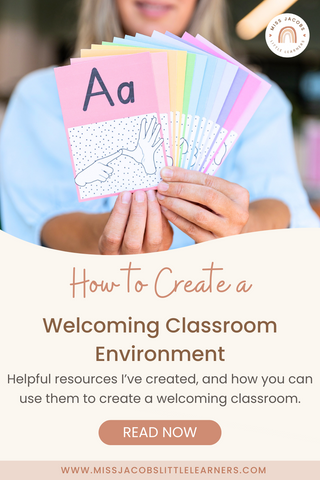

Teacher and Founder of Miss Jacobs Little Learners. If you’re dedicated to making a positive difference in the lives of your students – I’m here to help you.
Read MoreMiss Jacobs’ Little Teacher Community is a dedicated space for teachers just like you!
JOIN HERESign up as a Miss Jacobs BFF member today and get access to free resources!
sign up
As educators, we’ve all been there, dipping into our own pockets to pick up those added extras for our classrooms. Creating a visually stimulating learning environment isn’t always easy when...
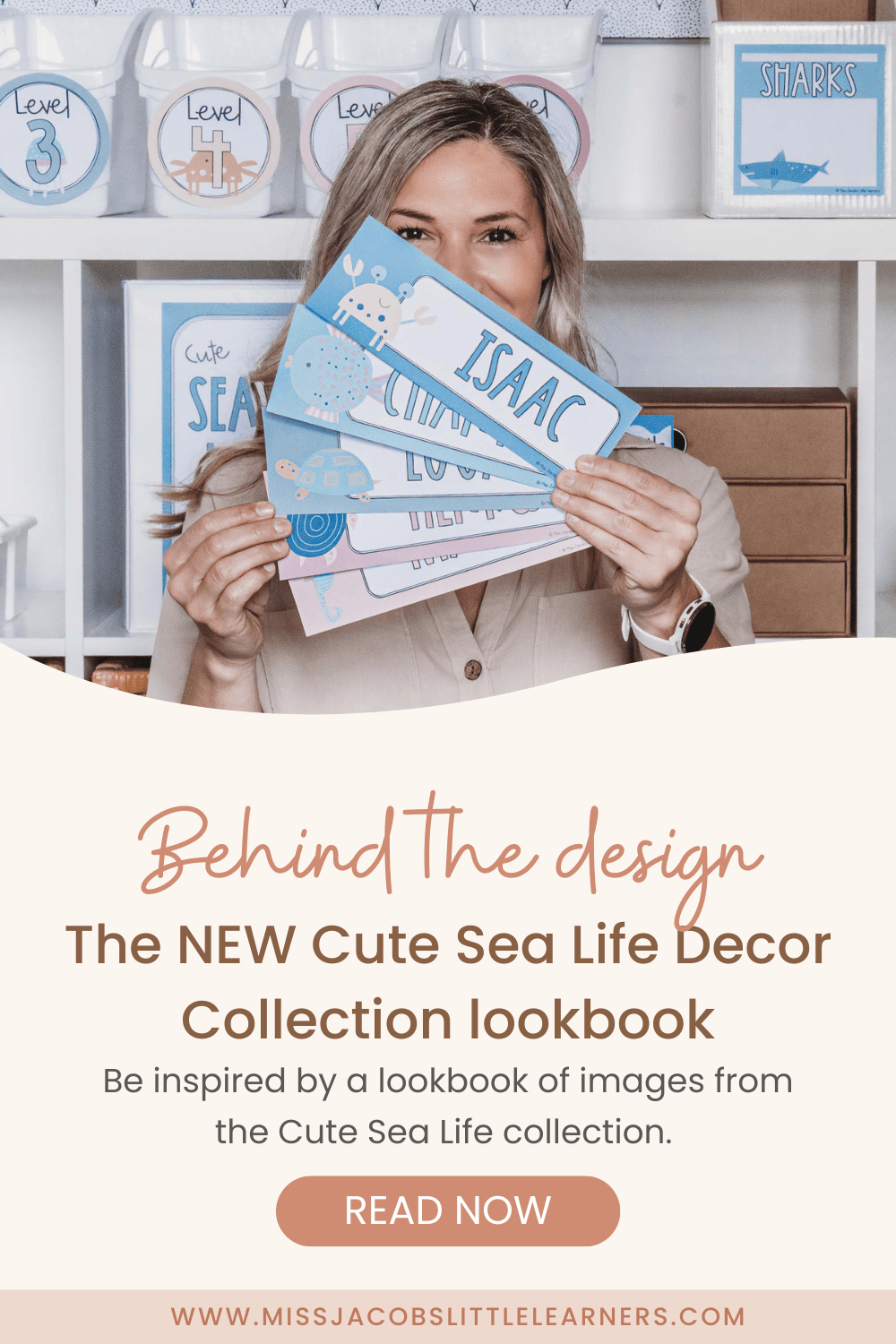
Following the overwhelmingly positive response to the 'Cute Labels' collection (seriously you guys 🤩), your enthusiasm for a sea life theme couldn't be ignored. So, after some brainstorming and a...
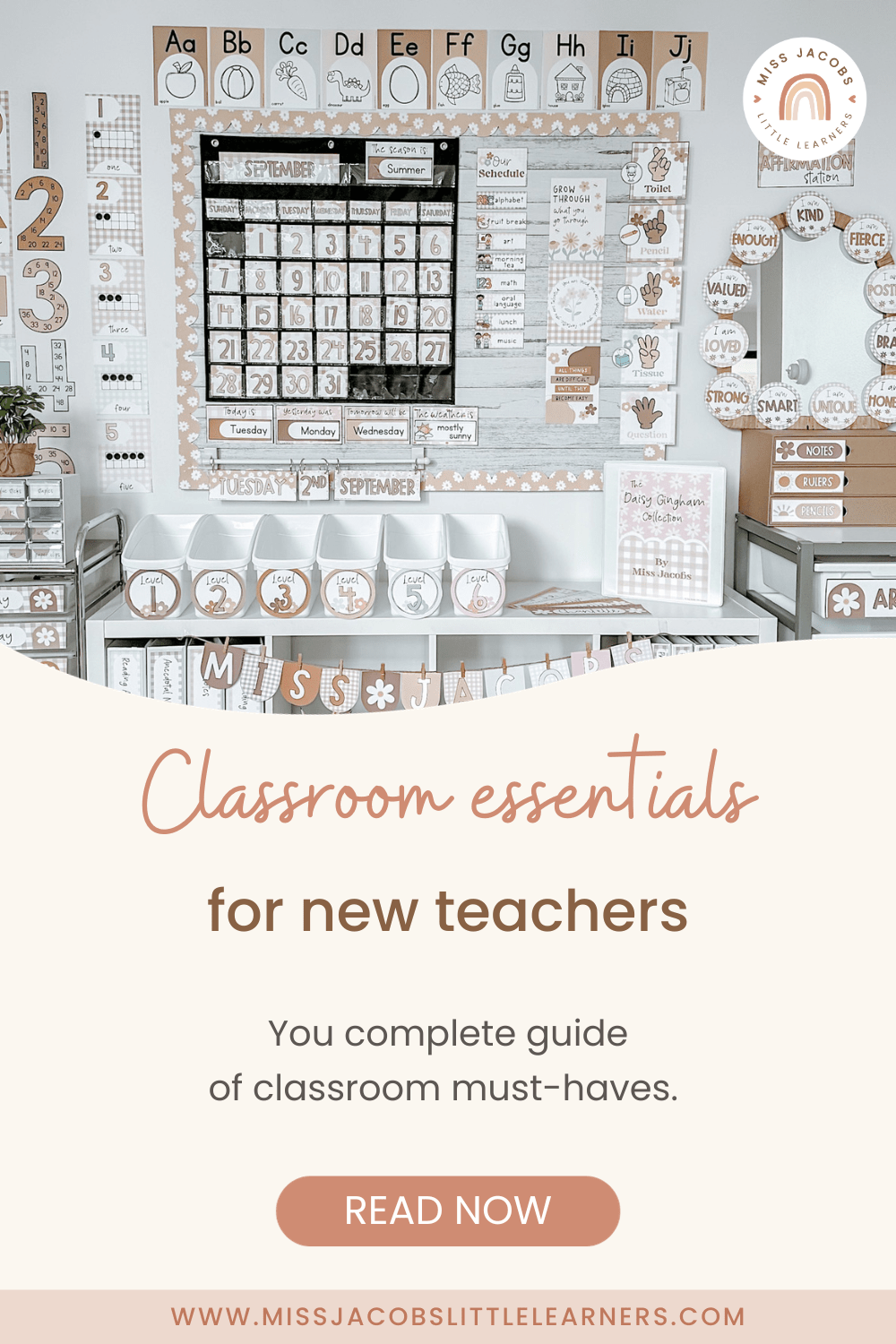
Ahhh, to be a grad teacher again. There’s no feeling quite like walking into your very own classroom for the first time. The excitement, the nerves, the niggling sense of...
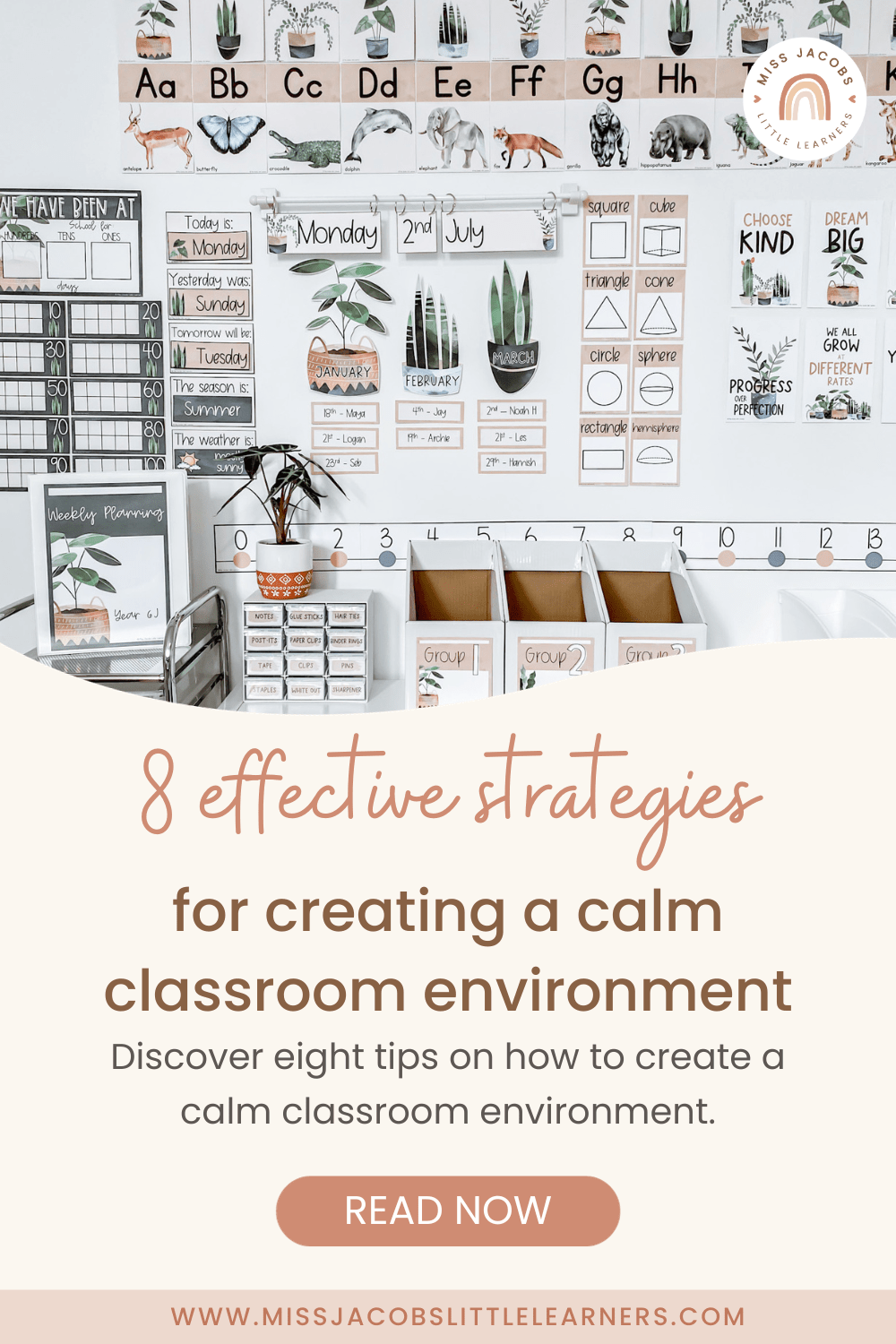
Have you ever walked into a classroom only to find your students fidgeting, interrupting, daydreaming, staring out the window, making paper planes, forgetting their inside voices and the stories that...